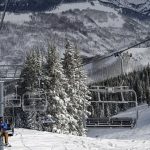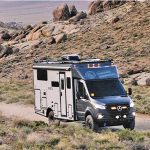The National Ski Areas Association (NSAA) estimated that U.S. ski areas tallied an estimated 56.2 million skier and snowboarder visits during the 2013-14 season-a figure just shy of the 10-year industry average of 57.3 million, and down only 1.3 percent from last season’s 56.9 million skier visits.
The results are encouraging given the weather challenges of 2013-14.
“With the drought and a rough start to the season in the Far West, an abundance of cold and snow in the East and Midwest, and near-perfect conditions in many parts of the Rocky Mountains, it’s hard to imagine a more complicated weather pattern over the course of one season,” said Michael Berry, NSAA president.
Most of the country had a positive season, with the four resort regions from the Rockies to the Atlantic posting gains relative to last season and 10-season averages. Good snowfall contributed to increased visits in the Southeast (15 percent), Rocky Mountains (6.4 percent), Midwest (4.1 percent), and Northeast (0.6 percent)-collectively a 5.3 percent increase over last season and their third-best season in 36 years of available estimates. By contrast the Pacific Northwest and Pacific Southwest had very low snowfall well into the season, enough to drive a 27.7 percent decline in visits: a 27.5 percent drop for the Pacific Northwest and a 27.8 percent drop for the Pacific Southwest, reducing visitation to the second lowest level in 36 years.
It’s important to note that if the West Coast had experienced an average amount of skier visits, nationally the ski industry would have been close to another record season. In longer perspective, visits nationally were up 10.2 percent in 2013-14 from a recent low of 51 million visits in 2011-12, and down 7.2 percent from the record high of 60.5 million in 2010-11.
NSAA will release a final Kottke End of Season Survey this summer. For more information visit NSAA online at NSAA.org.












